If you are a full-time RV’er, then you know the importance of keeping your refrigerator running properly. A breakdown can mean spoiled food and a lot of hassle. One common issue that RVers face is ammonia build-up. This can cause the fridge to stop working altogether. In this article, we will provide a comprehensive guide on how to check ammonia levels in an RV fridge, and offer some tips on how to prevent ammonia build-up in the first place!
Table of Contents
Why Is Ammonia Used in Refrigerators?
Ammonia is a naturally occurring element that has been used in refrigerators for many years. It is safe, stable, and non-flammable, making it an ideal choice for use in RV fridges. Ammonia is also very efficient, meaning that it requires less energy to operate than other refrigerants.
One of the main reasons why ammonia is used in RV fridges is because it does not contribute to ozone depletion. Unlike other refrigerants, such as chlorofluorocarbons (CFCs) and hydrofluorocarbons (HFCs), ammonia does not have a negative impact on the atmosphere.
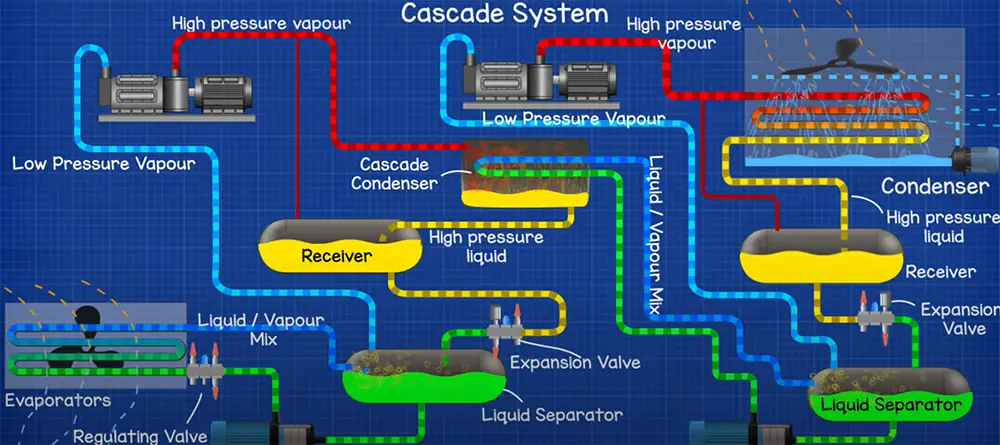
Another advantage of using ammonia in RV fridges is that it does not require a compressor. This means that ammonia-powered RV fridges are usually smaller and lighter than other types of fridge, making them easier to transport and install.
High levels of ammonia can be dangerous, so it is important to know how to check the ammonia level in your RV fridge. [1], [2]
Dangers of Ammonia Leakage
Although ammonia is safe to use in RV fridges, it can be dangerous if it leaks. Ammonia is a colorless, corrosive gas that has a strong, pungent odor. It is used in many household and industrial products, including cleaning supplies, fertilizers, and some types of plastics. Although it is a naturally occurring element, ammonia can be harmful to humans and animals if it leaks into the air or water.
Exposure to high levels of ammonia can cause irritation to the skin, eyes, nose, throat, and lungs. Inhaling large amounts of ammonia can lead to coughing, choking, and inflammation of the respiratory tract. High concentrations of ammonia in the air can also cause chemical burns and permanent blindness. Ammonia exposure can also aggravate pre-existing conditions such as asthma or emphysema. In severe cases, ammonia exposure can be fatal, especially if the problem will be ignored for too long. [3]
How to Identify the Ammonia Leakage in Your RV Fridge?
If you suspect that there is an ammonia leak in your RV fridge, it is important to take action immediately. Here are a few tips on how to check for an ammonia leak.
Check for the yellow stains
The first thing you should do if you suspect an ammonia leak is to check for yellow or greenish stains on your fridge. Ammonia is a colorless gas, but it can leave behind yellow stains when it leaks. These stains are usually found on the exterior insulation panel, and sometimes walls.
Pay attention to the smell
Check if the fridge’s coils are hot
Next way to check for an ammonia leak is to touch the fridge’s coils. Ammonia is a very efficient refrigerant, so the coils in an ammonia-powered fridge are usually much cooler than the coils in other types of fridge. If you notice that the coils are hot, it could be a sign of an ammonia leak.
Check for any visible signs of damage to the fridge or tubing
Last way to check for an ammonia leak is to look for any visible signs of damage to the fridge or tubing. If you see any cracks, holes, or leaks in the fridge or tubing, there is a good chance that ammonia is leaking. Ammonia leaks can cause corrosion and damage to metal surfaces.
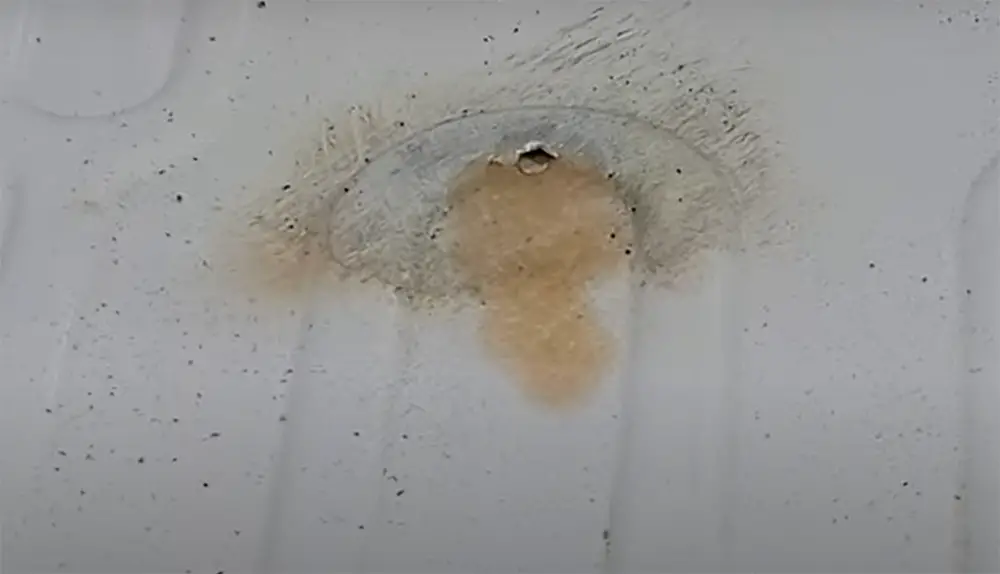
If you see any signs of ammonia leak, it is important to open all the windows and doors and leave the area. You should also call a qualified technician to repair the leak as soon as possible. [4], [5], [9], [10]
How to Check Ammonia Levels in Your RV Fridge
If you suspect that there is an ammonia leak in your RV fridge or simply want to double check if they aren’t too high, it is important to check the ammonia levels as soon as possible. Ammonia levels can be checked with two different methods, and we shall go through each of them in detail.
Use ammonia detector instrument
The first method you can use to check the ammonia levels in your RV fridge is by using an ammonia detector instrument. Ammonia detectors are readily available for purchase online or at hardware stores.
To use the ammonia detector, simply follow the instructions that come with the device. Generally, you will need to turn on the power button and then press the test button. The device will then take a sample of the air and give you a reading of the NH₃ levels present.
If the reading is 0 ppm (parts per million), this means that there are no traces of ammonia in the air and everything is normal. However, if the reading is way above 0 ppm, this means that there are traces of ammonia present and you should take action immediately. Usually levels above 100 ppm are enough to make people feel sick, but it’s better to not let it get to that point.
Ammonia detectors are best to be placed near the fridge’s storage area so that you can get an accurate reading. [3], [4], [5], [6], [9]
Phenolphthalein paper
Another method you can use to check the ammonia levels in your RV fridge is by using a pH strip test. pH strips are readily available for purchase online or at hardware stores.
Using the pH strip test is very easy. Generally, you will need to dip the strip into a sample of water and then hold it inside the box of your RV fridge. If the strip changes color, this means that there are traces of ammonia present. The darker the color change, the higher the level of ammonia is. Usually pink color indicates that ammonia is present in the air, but it hasn’t reached toxic levels yet. If it’s considerably darker, you will need to take some measures right away. [4], [7]
Detection cloth method
If you don’t have an ammonia detector or can’t get your hands on one, fear not! There is another method that you can use to check the ammonia levels in your RV fridge, and that’s by using a detection cloth.
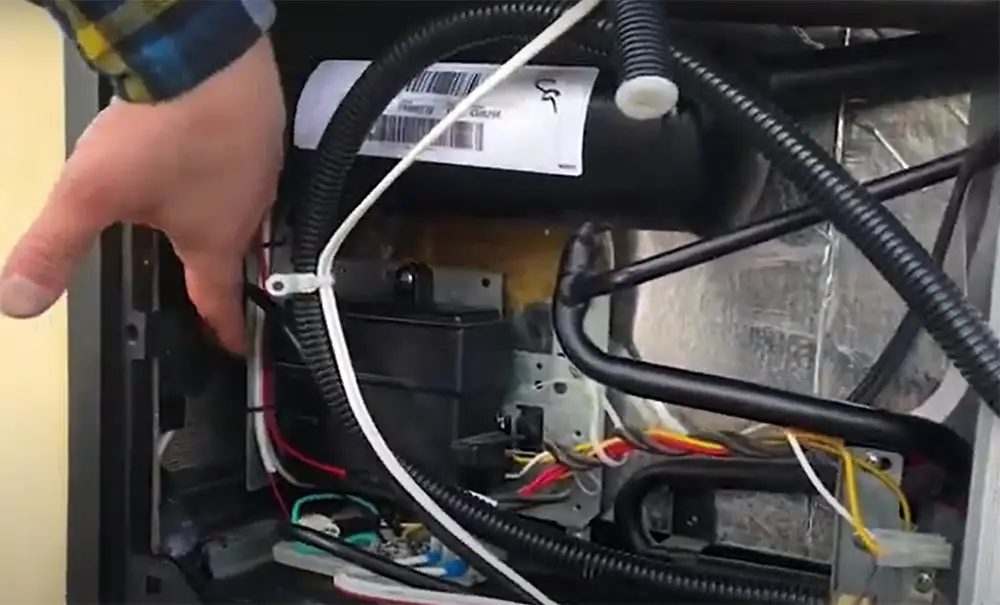
After 30 minutes have passed, take a look at the cloth. If it has turned green, this means that there are high levels of ammonia present and you should take some measures immediately. However, if the cloth is still its original blue color, this means that everything is normal and there are no traces of ammonia.
While the detection cloth method isn’t as accurate as the ammonia detector method, it’s still a good way to check if there are any traces of ammonia in your RV fridge. And don’t worry, the cloth will return to its original color after the ammonia is gone from the air. [7]
Dealing With Ammonia Leaks
If you’ve detected an ammonia leak in your RV fridge, there are a few things you can do to deal with it.
Ventilate the area
The first thing you should do is open all the doors and windows in your car to ventilate the area. Ammonia is a very strong gas and can quickly build up to dangerous levels if it’s not given enough ventilation. Ventilating will help to dissipate the ammonia fumes and make the air safer to breathe.
Change the cooling unit
If the leak is coming from the cooling unit, you will need to change it. This is a job best left to a professional, so we recommend taking your RV to a qualified technician. They will be able to properly diagnose the problem and replace the cooling unit if necessary.
Changing the cooling unit is usually a very expensive repair, so it’s something you’ll want to avoid if at all possible. That’s why it’s so important to regularly check for leaks and take care of them as soon as they’re found.
Use vinegar to neutralize the smell
If you’re still struggling with strong ammonia odor, you can use vinegar to neutralize the smell. Simply spray some of white vinegar near the source of the leak and let it stay for a few hours. The vinegar will help to absorb the ammonia fumes and should make the air void of the pungent ammonia smell. [11]
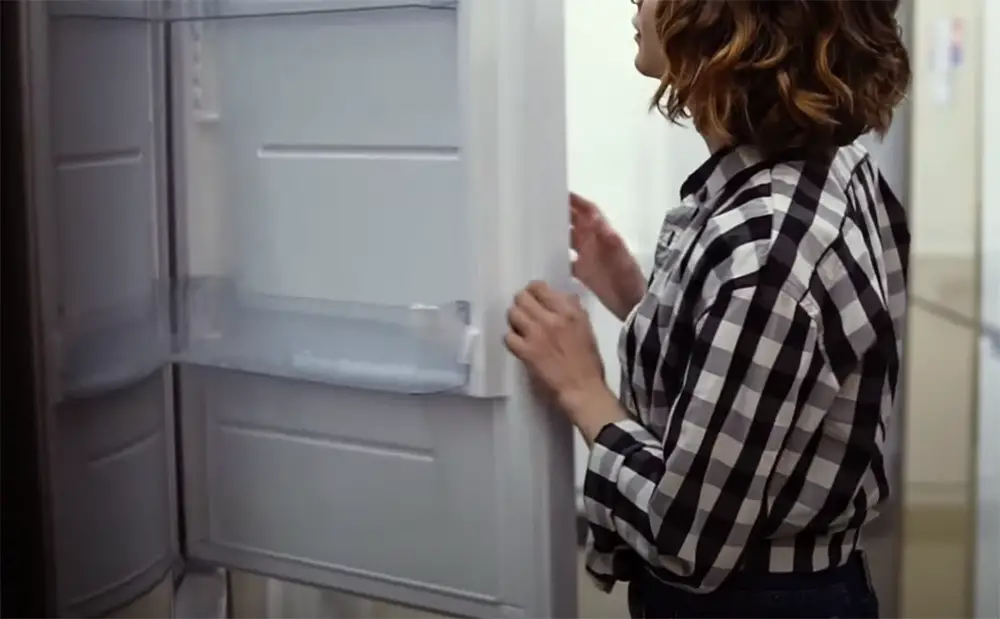
Preventing Ammonia Leaks
The best way to deal with an ammonia leak is to prevent it from happening in the first place. There are a few things you can do to help prevent leaks from occurring.
Check up on your fridge regularly
Use a quality cooling unit
A cooling unit is a device that uses ammonia to cool air or products. Ammonia is a refrigerant, which means it has a low boiling point and can easily turn into gas. This makes it ideal for use in refrigeration because it can remove heat from the air or product, making them colder. The cooling unit works by circulating the ammonia gas through a series of coils. As the ammonia passes through the coils, it absorbs heat from the surrounding air or product. This process continues until the desired temperature is reached.
From this, it is clear just how essential a cooling unit is. When choosing a cooling unit for your RV fridge, it’s important to choose one that is of good quality. A high-quality cooling unit will be less likely to leak and will last longer.
Make sure the fridge is level
If your RV fridge isn’t level, it can cause the cooling unit to leak. That’s why it’s so important to make sure that your fridge is always level when you’re setting up camp. You can use a leveler or some other type of leveling device to make sure that everything is in its proper place.
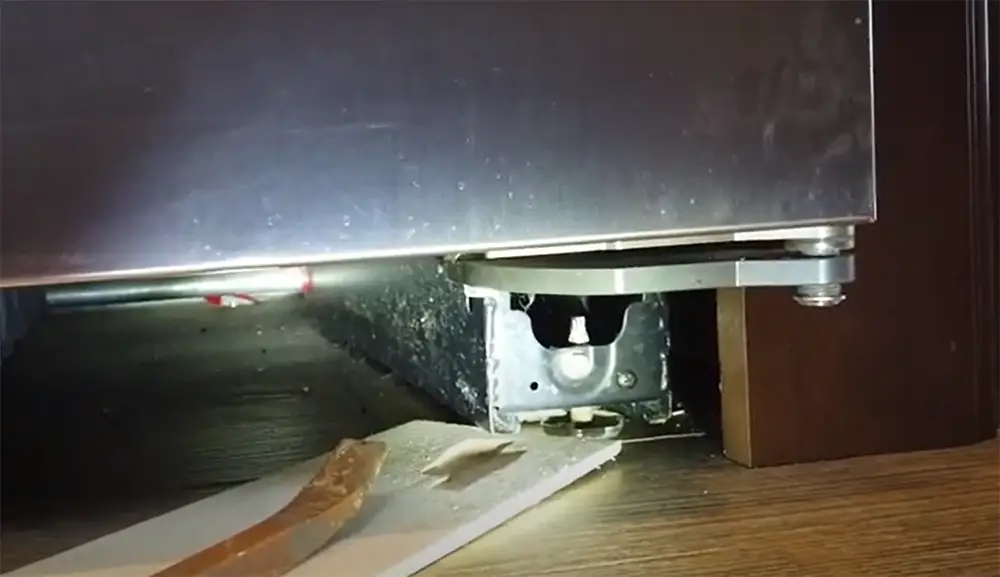
Make sure the fridge has good ventilation
Another thing you can do to prevent ammonia leaks is to make sure that your RV fridge has good ventilation. This means ensuring that there is enough space around the fridge for air to circulate. If the fridge is too close to a wall or other object, it won’t be able to properly ventilate and this could lead to the accumulation of ammonia, or even an ammonia leak. [10], [12]
FAQ
Can you recharge an ammonia RV refrigerator?
No, you cannot recharge an ammonia RV refrigerator. These types of refrigerators rely on a small amount of liquid ammonia to cool the interior space. If there is a leak in the system, the entire contents of the fridge will need to be discarded.
To check for a leak, open the access panel to the cooling coils and look for any greenish-yellow residue. This residue indicates that there is a breach in the system and that it needs to be repaired immediately by a qualified technician.
How do I know if my fridge is leaking ammonia?
If you notice a strong ammonia smell coming from your fridge, this is a sign that there is a leak. Another way to tell if your fridge has an ammonia leak is by checking the fridge for yellow spots. If you see any yellow spots, this means that ammonia has leaked out and is now present on the surface of the fridge.
The tubes of your fridge also will overheat if there is a leak. You can check the tubes by feeling them with your hand. If they are hot to the touch, this is an indication that there is an ammonia leak.
How do you fix ammonia in a refrigerator?
If your fridge has an ammonia problem, you will need to ventilate the surrounding area and make a plan to change the cooling unit immediately.
Ammonia is a very toxic substance, so it is important to take all necessary precautions when dealing with it. If you believe that there may be an ammonia leak in your fridge, it is best to evacuate the area immediately and call a professional to come and assess the situation.
Useful Video: RV Refridgerator AMMONIA LEAK!!! – Full Time Off Grid RV Living
Conclusion
Ammonia leaks in RV fridges are not something that should be taken lightly. For that reason it’s important to check the ammonia levels in your RV fridge and surrounding area. If you suspect there might be a leak, it’s important to take action immediately. Use an ammonia detector or detection strip test to check the levels in your fridge. If there is an ammonia leak, you’ll need to ventilate the area and call a professional to help you repair the leak.
After you’ve taken care of the leak, be sure to keep an eye on the area and regularly check for any signs of another leak. Ammonia leaks can be dangerous, so it’s important to take them seriously and deal with them as quickly as possible. Thanks for reading!
References:
- https://cen.acs.org/articles/94/i28/interest-ammonia-refrigerants-surging.html
- https://pubchem.ncbi.nlm.nih.gov/compound/Ammonia
- https://teamster.org/ammonia-refrigeration-warehouses/
- https://www.riversidetrailer.com/how-to-check-the-ammonia-level-in-rv-fridge/
- https://www.camperupgrade.com/how-to-check-ammonia-level-in-rv-fridge/
- https://www.sensidynegasdetection.com/support/application-support/refrigeration-gas-detection.php
- https://blog.indigoinstruments.com/ammonia-gas-leak-detection/
- https://www.rvzone.com/how-to-check-the-ammonia-level-in-rv-fridge/
- https://outdoorbarren.com/why-does-my-rv-refrigerator-smell-like-ammonia/
- https://rvrefrigeratorrepair.com/troubleshooting/
- https://www.hunker.com/13420065/what-neutralizes-an-ammonia-smell
- https://www.cs.cmu.edu/~mnr/fridge.html

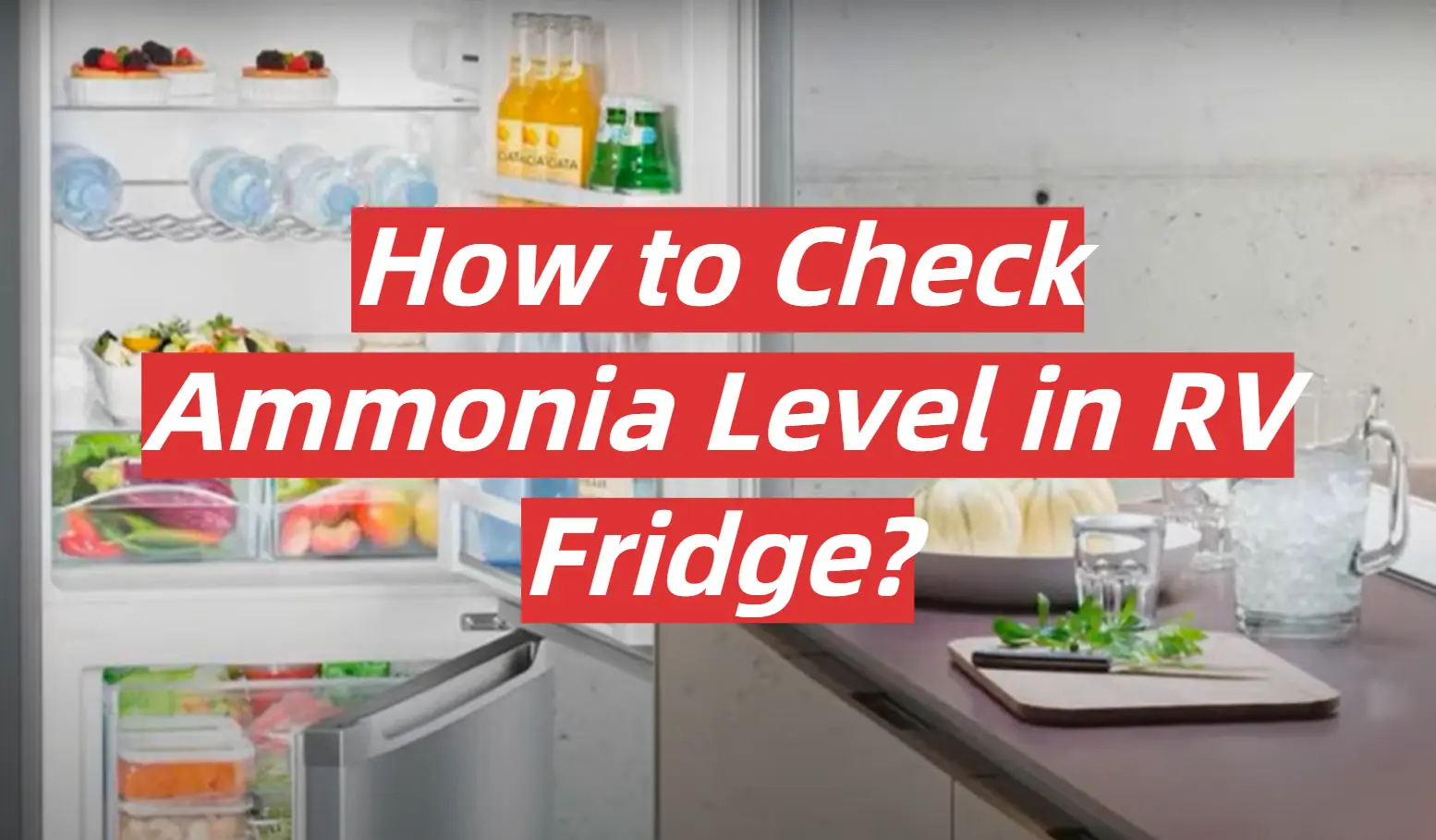
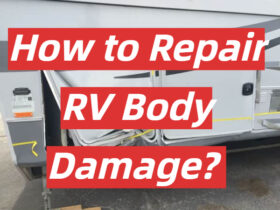
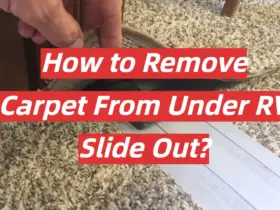
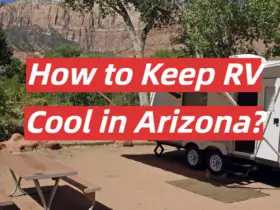
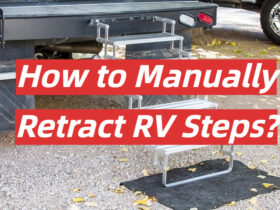
Leave a Reply